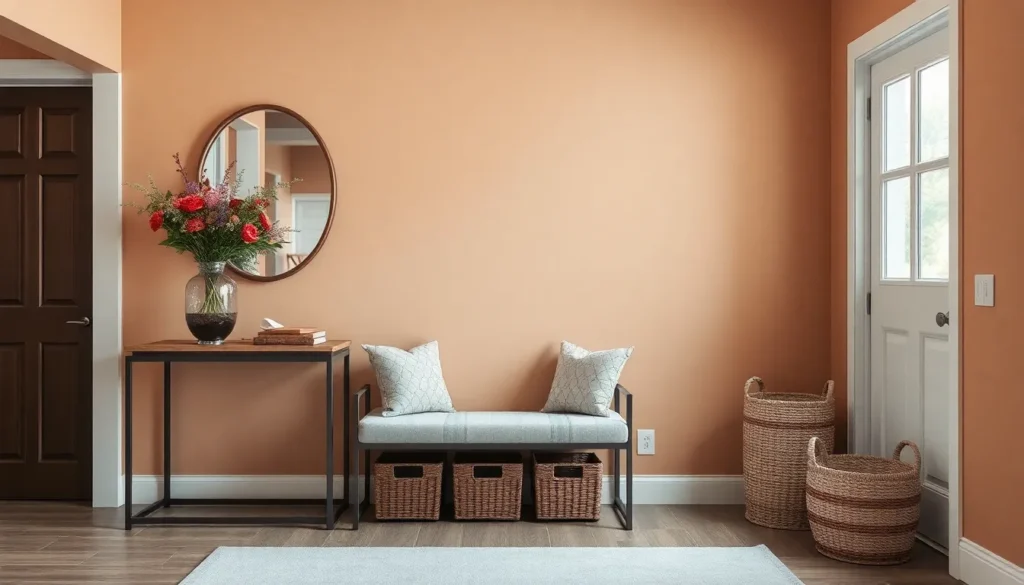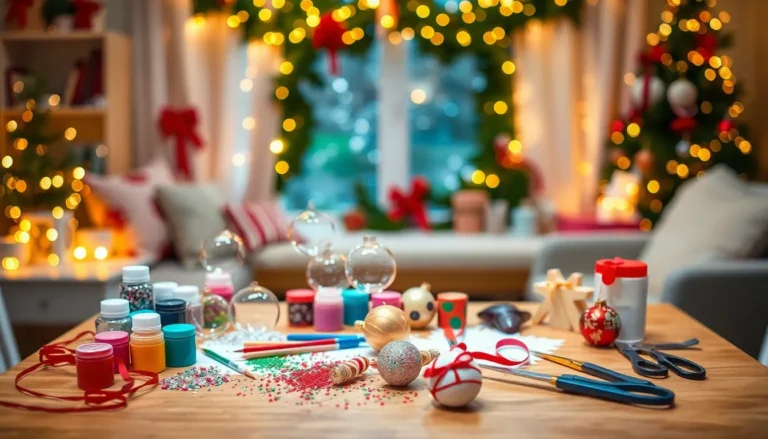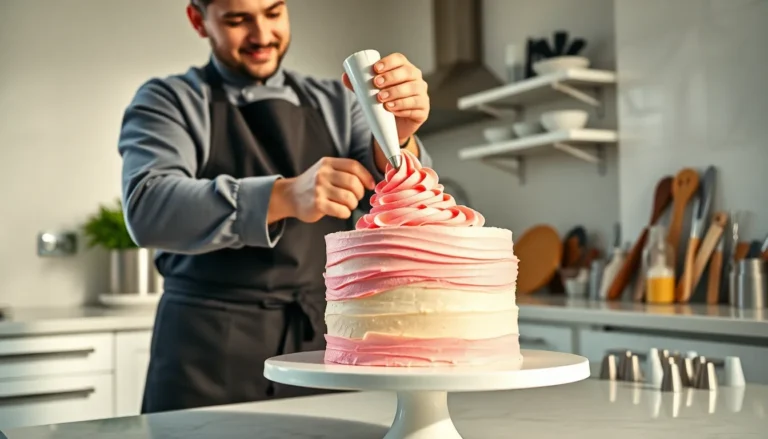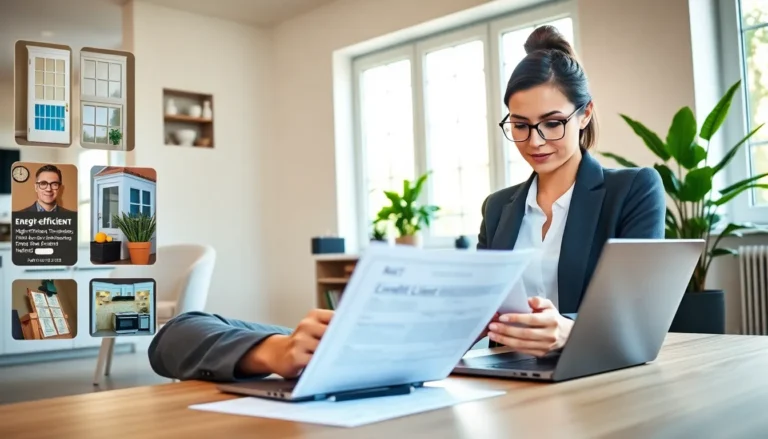Table of Contents
ToggleThe entryway is the first impression of a home, setting the tone for what lies beyond. A well-designed entryway not only enhances curb appeal but also provides a functional space for organization and style. It serves as a welcoming transition from the outside world into the comfort of home.
In today’s fast-paced life, maximizing the potential of this often-overlooked area is essential. Thoughtful entryway design can transform a mundane space into a reflection of personal taste while ensuring practicality. From choosing the right furniture to incorporating clever storage solutions, every detail counts in creating an inviting and efficient entryway.
Importance Of Entryway Design
Entryway design plays a crucial role in creating a welcoming atmosphere. It forms the initial impression for visitors, making it essential for homeowners to focus on aesthetics and functionality. A well-organized entryway can reflect personal style while promoting an orderly environment.
Maximizing space in the entryway enhances both usability and aesthetics. By selecting appropriate furniture, such as a stylish bench or a decorative console table, homeowners can balance form and function. Storage solutions, like hooks and baskets, simplify organization, allowing easy access to items like coats and shoes.
Improving curb appeal significantly impacts a home’s overall attractiveness. Thoughtful entryway design can elevate the exterior’s visual appeal while inviting guests inside. An inviting entryway fosters a sense of warmth, ensuring guests feel welcome from the moment they arrive.
Efficient entryway design can also contribute to the home’s overall efficiency. A well-planned space reduces clutter and promotes smoother traffic flow. Prioritizing thoughtful design can transform an overlooked area into a functional, aesthetically pleasing part of the home.
Key Elements Of Entryway Design
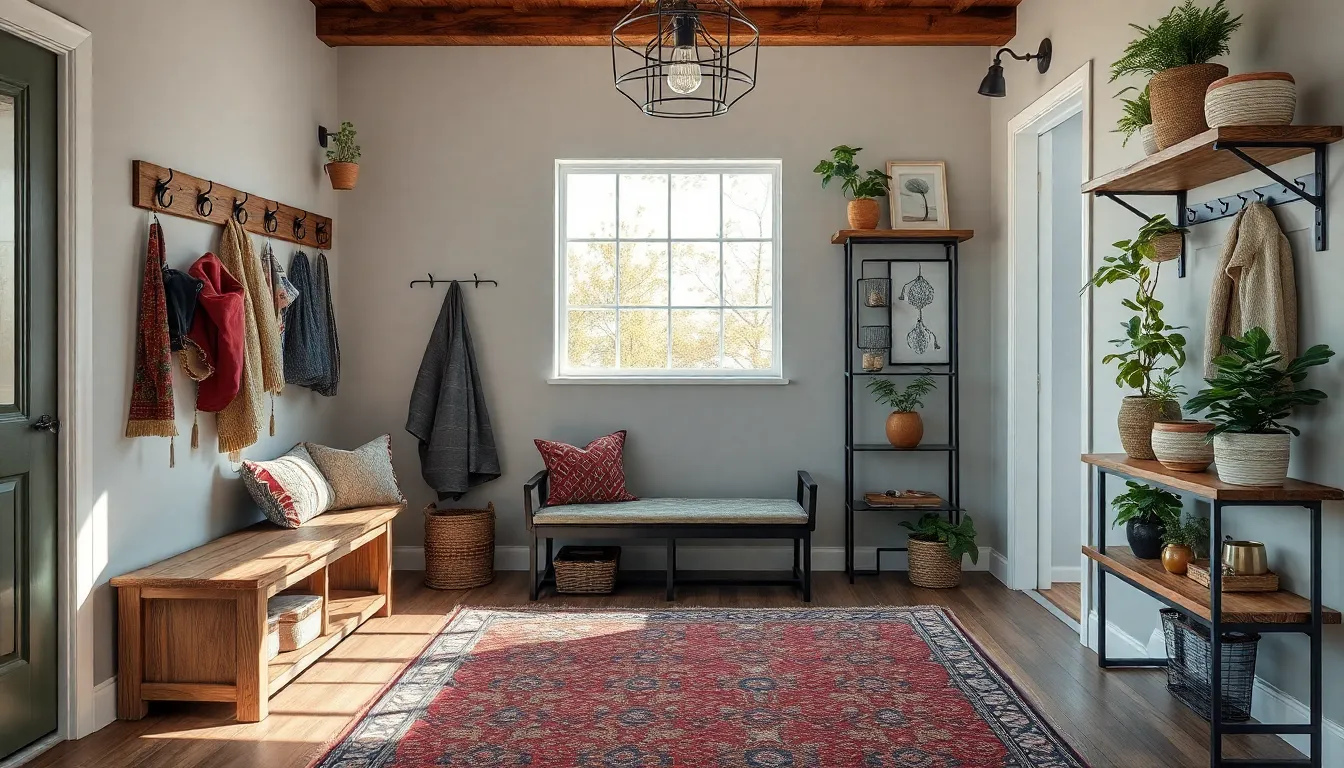
Entryway design combines functionality and aesthetics, creating a space that serves practical purposes while making a strong visual impact. Key elements play vital roles in achieving an inviting and organized entryway.
Functionality
Functionality is essential in entryway design, as this space must accommodate daily routines. Properly planned storage solutions increase usability. Consider using:
- Benches: Provide seating for removing shoes and can include hidden storage.
- Hooks and racks: Allow for easy access to coats, bags, and keys.
- Shelving: Offers additional vertical space for decorative items and functional storage.
- Baskets: Help neatly store smaller items, keeping clutter to a minimum.
Arranging these elements thoughtfully enhances the flow of movement and ensures the entryway remains organized and user-friendly.
Aesthetics
Aesthetics contribute to the overall appeal of the entryway, setting the tone for the rest of the home. Elements to consider for visual impact include:
- Color scheme: Utilize a palette that reflects personal style while ensuring warmth and welcome.
- Lighting fixtures: Incorporate stylish lighting options to brighten the space and emphasize design features.
- Art and decor: Select pieces that reflect personal tastes, such as mirrors to enhance brightness and create depth.
- Rugs: Choose durable materials and designs that complement the overall entryway theme while adding texture.
Balancing functionality with aesthetic choices creates a unified look that enhances the entryway’s charm and invites guests into the home.
Styles Of Entryway Design
Entryway design styles vary widely, and homeowners can choose from several aesthetics to create a unique and welcoming first impression. Each style has distinct characteristics that contribute to both functionality and visual appeal.
Modern
Modern entryway designs emphasize simplicity and minimalism. Clean lines and neutral color palettes dominate, with furniture that boasts sleek forms and efficient storage solutions. Materials such as metal and glass often feature prominently, providing a contemporary touch. Key elements include geometric wall art, integrated lighting, and functional storage like floating shelves, which create an uncluttered look while maximizing space efficiency.
Rustic
Rustic entryways evoke warmth and comfort through natural materials and organic textures. This style often incorporates wood features, such as reclaimed wood benches or knotty pine walls, adding a sense of heritage. Earthy color tones like browns, greens, and warm whites enhance the inviting atmosphere. Decorative elements include woven baskets for storage, vintage hooks for coats, and artisan-crafted accessories, which collectively foster a cozy, homey feel.
Traditional
Traditional entryway designs reflect timeless elegance, characterized by classic furnishings and rich colors. This style includes ornate details, antique furniture, and traditional decor. Key components feature hardwood flooring, symmetrical layouts, and decorative moldings. Accessories such as elegant mirrors, framed artwork, and sophisticated lighting fixtures contribute to a refined ambiance. With careful selection, traditional entryways balance beauty and function, making a lasting first impression.
Tips For Designing An Inviting Entryway
Creating an inviting entryway involves thoughtful decisions regarding color, storage, and lighting. These elements work together to enhance both form and function.
Choosing The Right Color Palette
Selecting a color palette sets the mood for the entryway. Neutral tones like soft grays, beige, or whites promote a clean and welcoming atmosphere, while bold accent colors, like navy or deep green, add a touch of personality. Different finishes can create depth, so consider a mix of matte and glossy surfaces for visual interest. For example, a matte wall may pair well with a shiny console table. Additionally, incorporating an accent wall with wallpaper or a bolder paint choice provides a focal point that captivates visitors upon arrival.
Incorporating Storage Solutions
Effective storage solutions maintain an organized entryway. Hooks or racks positioned near the door offer convenient places for coats and bags. Shelving units can hold shoes or display decorative items, while baskets conceal clutter and maintain organization. Multi-functional furniture, such as benches with integrated storage, maximizes utility without sacrificing style. Selecting durable materials ensures long-lasting use, making functional elements aesthetically pleasing and practical.
Lighting Considerations
Lighting plays a crucial role in creating an inviting entryway. A statement pendant light or chandelier can enhance visual appeal while providing adequate illumination. Wall sconces alongside mirrors reflect light, making the space feel larger and brighter. Natural light from nearby windows or doors boosts the entryway’s warmth and inviting nature. Dimmers can adjust brightness, accommodating various moods from day to night while contributing to the overall ambiance.
A thoughtfully designed entryway can transform the first impression of a home while enhancing its functionality. By balancing aesthetics with practical elements, homeowners can create a space that not only welcomes guests but also reflects their personal style. Incorporating stylish furniture and effective storage solutions can significantly reduce clutter and promote an organized environment.
Choosing the right colors and lighting further elevates the atmosphere, making the entryway an inviting transition into the home. With various design styles available, everyone can find an approach that resonates with their taste. Ultimately, investing time and effort into entryway design pays off in both beauty and usability.

